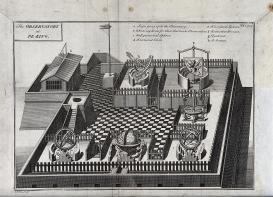In Novus Atlas Sinensis, the Jesuit missionary Martino Martini (1614–1661) claimed that in China, which is “pleasant for the climate, the soil, the fertile pastures, the rivers, and the sea . . . it seems that nature and art have collaborated with a beneficent and generous hand, so much so that it is not clear whether its fertility is indebted to its beauty, or vice versa.” Martini’s widely-read comments about the Qing Empire’s fertility and natural abundance came at a time when both Europeans and the Chinese were encountering vast arrays of new plants, soils, climes, and agricultural practices across the world and sought to incorporate them into universally-applicable schemes of classification. The assimilation of foreign nature into familiar taxonomies enabled European missionaries, merchants, and colonizers to commodify it and thus profit from its commercial exchange across an increasingly interconnected globe. To Martini, the nature of soil was ultimately an issue of cosmography, and cosmography was an astronomical discipline—both in China and Europe. The missionary spent some time at the Imperial Astronomical Bureau in Beijing in 1650, which was then under the management of Johann Adam Schall von Bell, who was centrally involved in calendar reform. My research examines the associations between Martini’s natural historical writing and his often-overlooked work on Chinese calendrical astronomy. By studying Jesuit perceptions of the interrelations between Chinese agricultural practices and astronomy, my project seeks to unite strands of scholarship in agricultural history with global histories of science and of cosmology.

Engraving of the ancient observatory in Beijing, showing astronomical instruments cast by Jesuit missionaries.
Project
(2021)
